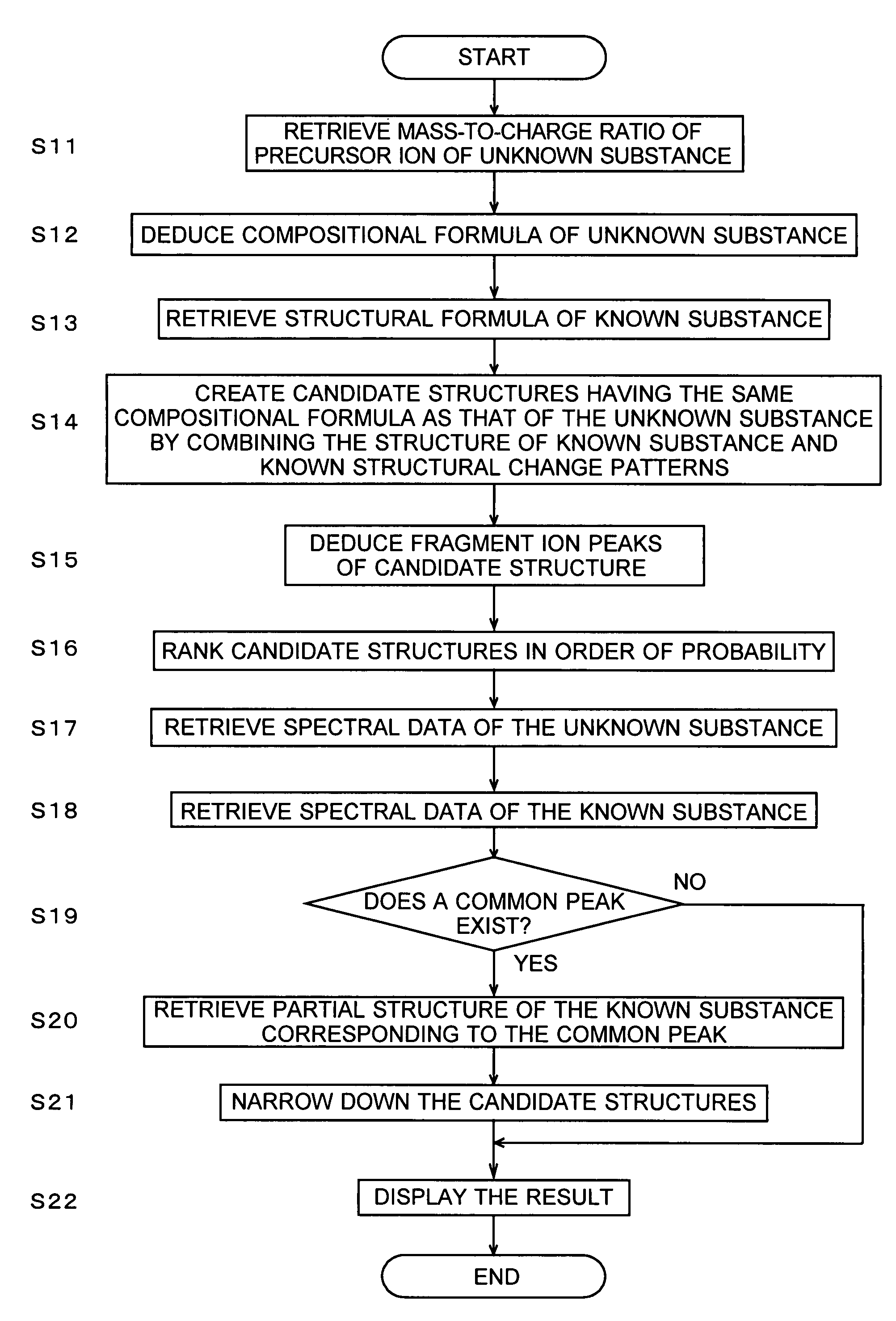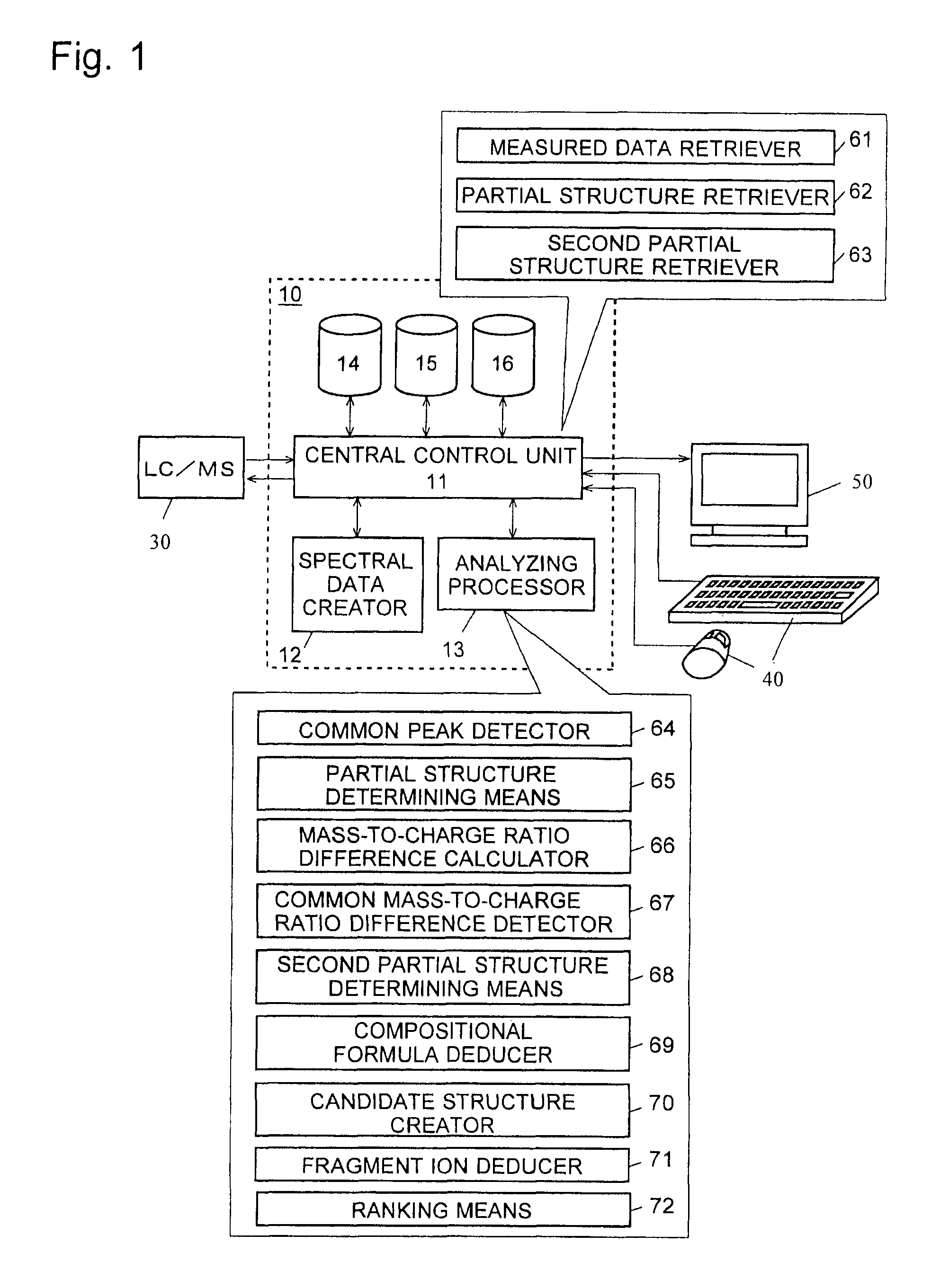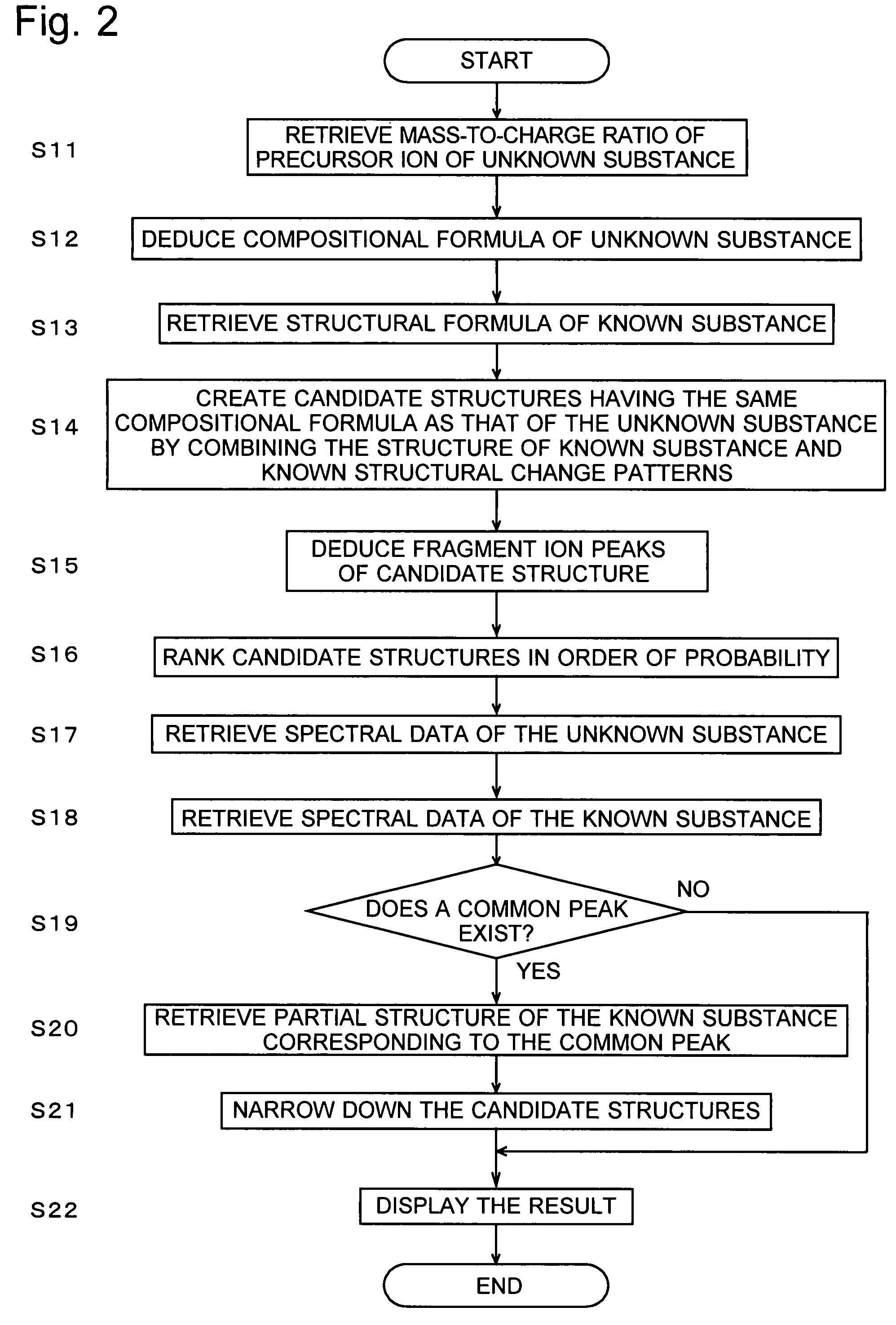Method of analyzing mass analysis data and apparatus for the method
a mass analysis and data technology, applied in the field of mass analysis data and apparatus for the method, can solve the problems of not being able to register all the compounds to be analyzed in the database library, not being able to break samples having special characteristics into ions, and being practically impossible to register all the compounds of agrichemicals and/or pharmaceutical compounds to the database library, so as to facilitate the the effect of derivation of the structure of an unknown substan
- Summary
- Abstract
- Description
- Claims
- Application Information
AI Technical Summary
Benefits of technology
Problems solved by technology
Method used
Image
Examples
Embodiment Construction
[0056]An embodiment of the apparatus for analyzing mass analysis data (data analyzing apparatus), which carries out an analysis by a method of analyzing mass analysis data according to the present invention, is described with reference to the drawings. Although the result of an analysis by a liquid chromatograph-mass spectrometer is used in this embodiment, other types of chromatograph-mass spectrometers such as a gas chromatograph-mass spectrometer, or a mass spectrometer with direct sample injection can alternatively be used.
[0057]FIG. 1 is a schematic diagram of the apparatus for the data analyzing apparatus 10 of the present embodiment. The data analyzing apparatus 10 processes detected data delivered from LC / MS 30. The data analyzing apparatus 10 contains a central control unit 11, a spectral data creator 12, an analyzing processor 13, a measured data memory unit 14, a reference data memory unit 15, and a structural change pattern memory unit 16. The measured data memory unit 1...
PUM
 Login to View More
Login to View More Abstract
Description
Claims
Application Information
 Login to View More
Login to View More - R&D
- Intellectual Property
- Life Sciences
- Materials
- Tech Scout
- Unparalleled Data Quality
- Higher Quality Content
- 60% Fewer Hallucinations
Browse by: Latest US Patents, China's latest patents, Technical Efficacy Thesaurus, Application Domain, Technology Topic, Popular Technical Reports.
© 2025 PatSnap. All rights reserved.Legal|Privacy policy|Modern Slavery Act Transparency Statement|Sitemap|About US| Contact US: help@patsnap.com



